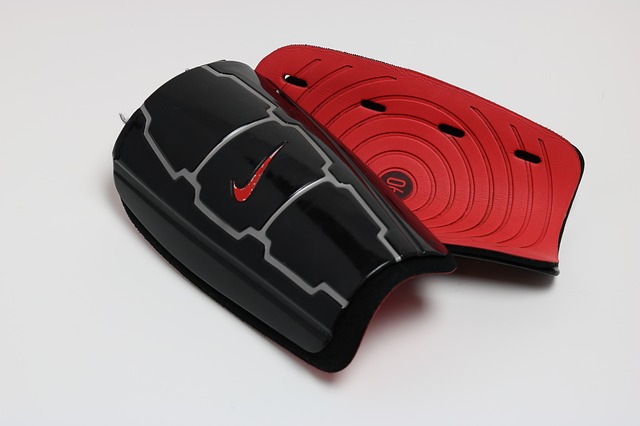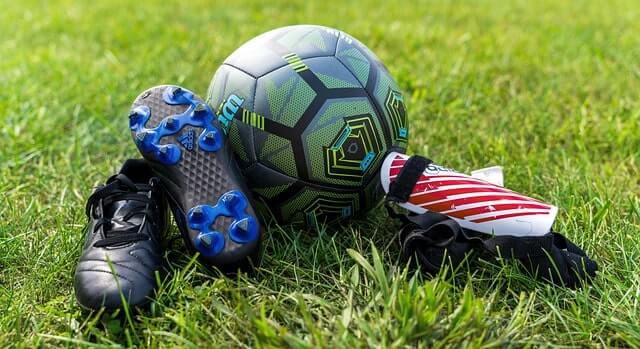There is a lot of nonsense when it comes to some soccer rules, and some of this nonsense is turning some players into dramatic actors.
However, if there is one thing that the soccer rules take seriously, it’s the safety of the players during a soccer game.
What this means is that many of the soccer rules are just made to protect the players, and some of these rules require the players to wear protective equipment.
Is the shin guard one of these equipment? Yes it is.
Shin guards are required by the laws of the game. In fact, the shin guard is one of the very few protective equipment that FIFA requires during a soccer game. However, there are certain rules that need to be followed when it comes to wearing shin guards.
So what are these rules exactly? Well, that’s what this article is going to discuss very soon.
Before we do that however, it is worth mentioning the importance of wearing a shin guard during a soccer game even if wearing it wasn’t forced in the first place.
Are shin guards important for soccer players?
I won’t talk about science and statistics here. However, I will be talking about my personal experience.
I, like many other players that were my friends a few years ago, used to think that shin guards aren’t really needed. I thought that they were a luxury that we do not need when we’re playing “the beautiful game”.
I was wrong. I learned the importance of shin guards when I got kicked on my shin by one of my opponents. The pain was unbelievable. I had to immediately leave the soccer field and lay down for more than 20 minutes just to give my leg a chance to recover.
I couldn’t move my leg for a few minutes just because of the pain. The funny thing is, the kick wasn’t really strong at all. It was a very weak kick, yet the pain was insane.
If you’ve ever been kicked on your shin before, then you know the feeling.
Since then, I learned that shin guards are required by the FIFA laws for a reason.

If you are a soccer player yourself, it is always best to keep your shin guard with you whenever you go to any soccer match. Do not play a second without it.
Why? Simply because shin guards are extremely important for soccer players, and they help you avoid a lot of pain.
What are the rules regarding shin guards in soccer?
Aside from the fact that shin guards are required by the laws of the game, there are other rules that are related to shin guards. Here they are:
1- Shin guards must be covered by socks.
As you may already know, all professional soccer players wear long socks. You can easily notice that if you have ever watched a soccer match.
You might have also not seen any shin guards. That’s because they are hidden under the socks of the players.
The FIFA rules require that the shin guards always be under the socks.
You may ask why? Well, I have some theories.
The first one is that having the shin guards under the socks keeps them stable. This will reduce the time wasted while the players try to fix their shin guards.
You rarely see a soccer player pausing the game to try to fix their shin guard during a professional game. One of the reasons could be the fact that the shin guards can barely move when covered with socks.
Another reason for keeping the shin guards under the socks is that the referee will not have to worry about the colors of the shin guard.
In soccer, the colors of the extra clothing and equipment that you wear matter a lot. They have to be extremely similar to the colors of your jersey.
For example, if a soccer player wants to wear tights during very cold weather conditions, then the tights should either be the exact same color of the shorts, or they should have a very similar color.
Having the shin guards placed above the socks will most probably force the players to use shin guards with a color similar to the one of their socks.
However, placing the shin guards under the socks will remove this condition and the effectiveness of the shin guards won’t be affected at all. So why not do it?
2- The shin guards must be made of suitable materials.
Materials like glass fibre, carbon fibre and others are used to make great shin guards.
While FIFA doesn’t go into too much detail about the type of shin guards that the players have to use, they do mention that the shin guards must be made of materials that can provide reasonable protection to the players.
This rule makes a lot of sense. Most soccer players will already be abiding by it anyways even if it wasn’t a FIFA rule.
From the perspective of the soccer clubs, losing a great player for a number of weeks due to injury is extremely more expensive than buying them an excellent shin guard that might protect them from certain injuries.
3- Lost shin guards must be replaced as soon as possible.
This scenario is extremely rare to happen, but the rules still cover it. According to the FIFA laws of the game, if a player loses their shin guard for any reason, they should replace it as soon as possible.
The player should leave the field to replace their shin guard not later than when the ball goes out of play.
Why do some soccer players wear small shin guards?
There are a number of soccer players that prefer to keep their shin guards as small as possible. They still use shin guards because the soccer laws require them, but they use a size that doesn’t affect them when they are playing.
There are some soccer players that claim that the large shin guards might sometimes make controlling the ball a little bit more difficult, and thus they prefer smaller shin guards.
For example, strikers might go for smaller shin guards to make sure that the ball doesn’t hit the shin guard when they are trying to kick the ball in mid air. They also prefer smaller shin guards for some other reasons.
CONCLUSION.
Small or not, the shin guard is a must when it comes to professional soccer. The soccer laws require it, and it is a good safety measure in general.

